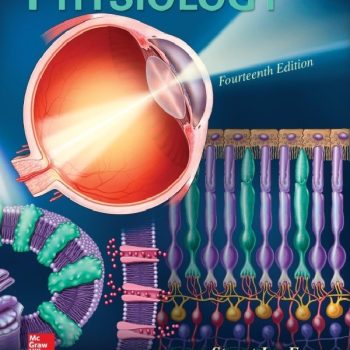Test Bank For Prescotts Microbiology 10th Edition By Willey Sherwood Woolverton
Chapter 03
Bacterial Cell Structure
Fill in the Blank Questions
1. The genus of bacteria that undergoes cell division in random planes, forming grapelike clusters of round bacteria, are the __________.staphylococci or staphylococcus
ASM Objective: 02.01 The structure and function of microorganisms have been revealed by the use of microscopy (including bright field, phase contrast, fluorescent, and electron).ASM Topic: Module 02 Cell Structure and FunctionBlooms Level: 1. RememberLearning Outcome: 03.02.01 Distinguish a typical bacterial cell from a typical plant or animal cell in terms of cell shapes and arrangements, size, and cell structuresLearning Outcome: 03.02.02 Discuss the factors that determine the size and shape of a bacterial cellSection: 03.02Topic: BacteriaTopic: Bacterial Cellular MorphologyTopic: Gram-Positive Staphylococci
2. Bacteria that do not have a fixed shape are said to be __________.pleomorphic
ASM Objective: 02.01 The structure and function of microorganisms have been revealed by the use of microscopy (including bright field, phase contrast, fluorescent, and electron).ASM Topic: Module 02 Cell Structure and FunctionBlooms Level: 1. RememberLearning Outcome: 03.02.01 Distinguish a typical bacterial cell from a typical plant or animal cell in terms of cell shapes and arrangements, size, and cell structuresSection: 03.02Topic: BacteriaTopic: Bacterial Cellular Morphology
3. A branched network of hyphae formed by the Actinomycetes is called a __________.mycelium
ASM Objective: 02.01 The structure and function of microorganisms have been revealed by the use of microscopy (including bright field, phase contrast, fluorescent, and electron).ASM Topic: Module 02 Cell Structure and FunctionBlooms Level: 1. RememberLearning Outcome: 03.02.01 Distinguish a typical bacterial cell from a typical plant or animal cell in terms of cell shapes and arrangements, size, and cell structuresLearning Outcome: 03.02.02 Discuss the factors that determine the size and shape of a bacterial cellSection: 03.02Topic: ActinomycetesTopic: BacteriaTopic: Bacterial Cellular Morphology
4. Actinomycetes form long filaments called ___________.hyphae
ASM Objective: 02.01 The structure and function of microorganisms have been revealed by the use of microscopy (including bright field, phase contrast, fluorescent, and electron).ASM Objective: 02.03 Bacteria and Archaea have specialized structures (e.g. flagella, endospores, and pili) that often confer critical capabilities.ASM Topic: Module 02 Cell Structure and FunctionBlooms Level: 1. RememberLearning Outcome: 03.02.01 Distinguish a typical bacterial cell from a typical plant or animal cell in terms of cell shapes and arrangements, size, and cell structuresLearning Outcome: 03.02.02 Discuss the factors that determine the size and shape of a bacterial cellSection: 03.02Topic: ActinomycetesTopic: Bacterial Cellular Morphology
True / False Questions5. Sterol-like molecules called hopanoids are thought to be important for the structural integrity of many bacteria because of their suspected role in membrane stabilization.TRUE
ASM Objective: 02.03 Bacteria and Archaea have specialized structures (e.g. flagella, endospores, and pili) that often confer critical capabilities.ASM Topic: Module 02 Cell Structure and FunctionBlooms Level: 2. UnderstandLearning Outcome: 03.03.01 Describe the fluid mosaic model of membrane structure and identify the types of lipids typically found in bacterial membranesLearning Outcome: 03.05.01 Compile a list of the structures found in all the layers of bacterial cell envelopes, noting the functions and the major component molecules of eachSection: 03.03Section: 03.05Topic: BacteriaTopic: Cellular OrganizationTopic: External Bacterial Structures
6. The cell membrane is a rigid structure that provides bacteria with their characteristic shapes.FALSE
ASM Objective: 02.03 Bacteria and Archaea have specialized structures (e.g. flagella, endospores, and pili) that often confer critical capabilities.ASM Topic: Module 02 Cell Structure and FunctionBlooms Level: 2. UnderstandLearning Outcome: 03.02.02 Discuss the factors that determine the size and shape of a bacterial cellLearning Outcome: 03.03.01 Describe the fluid mosaic model of membrane structure and identify the types of lipids typically found in bacterial membranesSection: 03.02Section: 03.03Topic: BacteriaTopic: Bacterial Cellular MorphologyTopic: External Bacterial Structures
7. Gram-positive bacteria have a thinner layer of peptidoglycan than gram-negative bacteria.FALSE
ASM Objective: 02.01 The structure and function of microorganisms have been revealed by the use of microscopy (including bright field, phase contrast, fluorescent, and electron).ASM Topic: Module 02 Cell Structure and FunctionBlooms Level: 2. UnderstandLearning Outcome: 03.04.01 Describe peptidoglycan structureLearning Outcome: 03.04.02 Compare and contrast the cell walls of typical Gram-positive and Gram-negative bacteriaSection: 03.04Topic: BacteriaTopic: External Bacterial Structures
8. Gram-positive bacteria have a structurally and chemically more complex cell wall than gram-negative bacteria.FALSE
ASM Objective: 02.01 The structure and function of microorganisms have been revealed by the use of microscopy (including bright field, phase contrast, fluorescent, and electron).ASM Objective: 02.02 Bacteria have unique cell structures that can be targets for antibiotics, immunity and phage infection.ASM Objective: 02.03 Bacteria and Archaea have specialized structures (e.g. flagella, endospores, and pili) that often confer critical capabilities.ASM Topic: Module 02 Cell Structure and FunctionBlooms Level: 2. UnderstandLearning Outcome: 03.04.01 Describe peptidoglycan structureLearning Outcome: 03.04.02 Compare and contrast the cell walls of typical Gram-positive and Gram-negative bacteriaSection: 03.04Topic: BacteriaTopic: Bacterial Cellular MorphologyTopic: External Bacterial Structures
9. Bacteria growing at lower temperatures have more saturated fatty acids in their membranes.FALSE
ASM Objective: 03.02 The interactions of microorganisms among themselves and with their environment are determined by their metabolic abilities (e.g., quorum sensing, oxygen consumption, nitrogen transformations).ASM Objective: 05.03 Microorganisms and their environment interact with and modify each other.ASM Topic: Module 03 Metabolic PathwaysASM Topic: Module 05 Microbial SystemsBlooms Level: 3. ApplyLearning Outcome: 03.03.01 Describe the fluid mosaic model of membrane structure and identify the types of lipids typically found in bacterial membranesSection: 03.03Topic: BacteriaTopic: Bacterial Cellular MorphologyTopic: External Bacterial Structures









Reviews
There are no reviews yet.